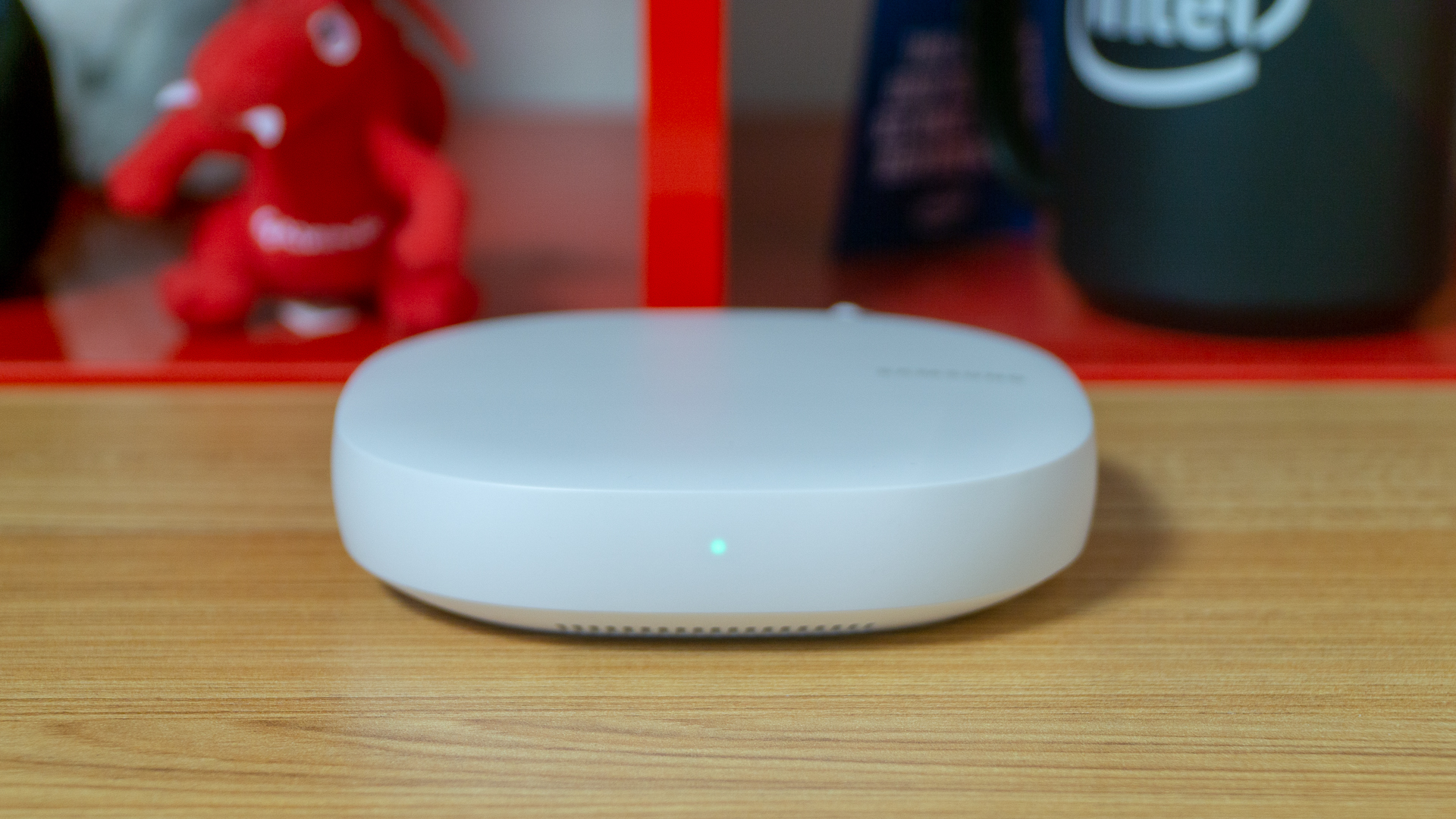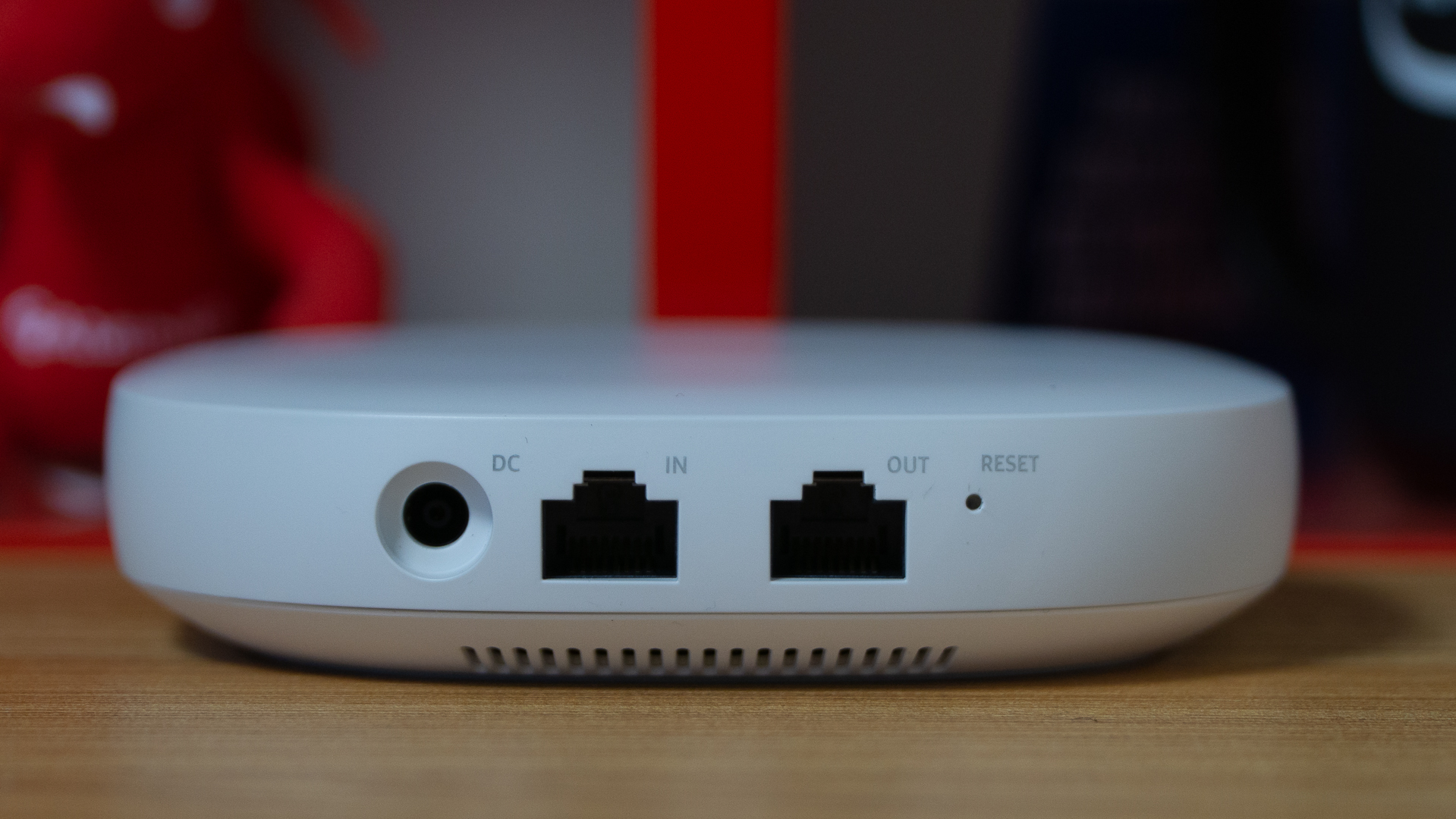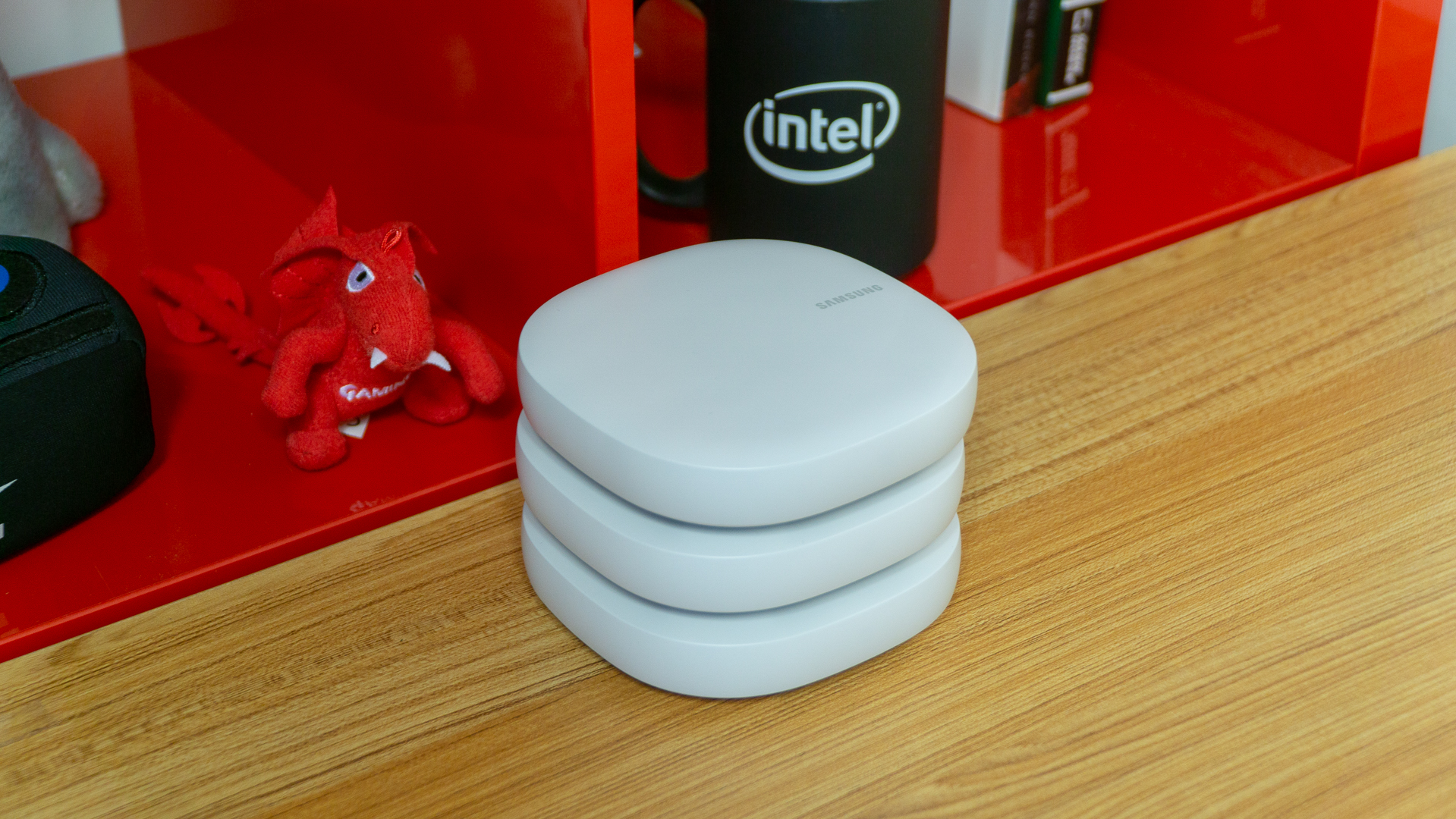Samsung Connect Home
Wireless mesh has quickly become the de facto mode for wireless routers. Why just get any old router when you can get a modular one that can grow with you, and is easily manageable through an app, for about the same price as most basic routers? However, Samsung still saw a hole in this market: smart homes.
Why can’t your router system also be the place where all of your smart home devices gather and communicate? That’s the entire conceit behind Samsung Connect Home.
Sure, it’s a wireless mesh router that’s just about as good as the best out there, but it also doubles as a smart home hub. How does it work out? Well, you get is a just-fine wireless mesh system that isn’t quite as robust on the connectivity side, but offers to be more of an every-device for your connected appliances.

Price and availability
For one Connect Home unit, which can work on its own as both a router and a SmartThings hub, Samsung wants $129 (about £99, AU$179). Now, for a complete, three-unit mesh system, that will cost you $299 (about £229, AU$399).
Sadly, the Connect Home line of mesh routers isn’t available in the UK or Australia just yet.
At the time of writing, a single Google Wifi unit goes for $119 in the US, but normally costs just as much as a single Samsung unit. The very same goes for the three-pack, with it costing $279 in the US at the time of writing and exactly as much as Samsung’s three-pack offer.
Likewise, the Linksys Velop system is on sale right now in the US at just $99 for a single unit, but otherwise costs just as much as the other two. Of course, the three-pack version features an identical price.
With identical pricing abound, not to mention identical AC speed ratings, what immediately comes into light is that the Samsung Connect Home holds a unique advantage over many competitors: built-in smart home management features. Google Wifi requires one of its smart speakers to act as an Internet of Things hub, meanwhile the Linksys product has no such option.
Design and setup
As is the case with nearly all Wi-Fi mesh systems, Samsung has designed Connect Home with simplicity and unassuming style in mind. Each matte white puck is a simple white mass with a samsung logo on top and an LED that shines and blinks either red or green indicating different statuses.
Likewise, each unit contains the same connections, so that any unit can act as the router to the network while the others perform as satellites.
These are some of the smallest Wi-Fi mesh units we’ve come across, making them perhaps some of the best for concealment and general placement as well. Otherwise, there’s nothing more notable about the Connect Home units’ look and feel, which is ultimately a good thing.
Setting up a Connect Home mesh network is done through the Samsung SmartThings app, this being a SmartThings device, after all. The whole process is very simple, and finishes within a few taps. You first begin with creating your network based on a unit connected to your modem or gateway, and then add what are called sub units individually.
Managing the various aspects of the network is very easy, with clear alerts when service is interrupted and for other events. However, we find the amount of features to be rather limited.
Sure, all of the normal port forwarding and connection type settings are present, and you can even prioritize network bandwidth toward a single device and limit usage of devices. But, unlike Google Wifi, you cannot drill down as deeply into information about those devices nor can you regarding the sub units.
The software makes it evident that Samsung’s focus is a bit divided creating both a networking and smart home management tool in a single product, whereas most other Wi-Fi mesh systems are focused on solely on the network.

Performance
Like most every Wi-Fi mesh system we’ve seen – save for high-power options, like Linksys Velop Pro – the Connect Home system is rated at AC1300 (866 Mbps at 5 GHz and 400 Mbps at 2.4 GHz), and works over a dual-band radio. Each unit also has beamforming on both 2.4GHz & 5GHz bands, has coverage up to 1,500 square feet and is powered by a quad-core, 710MHz ARM processor.
With all three units together, Connect Home can cover up to 4,500 square feet. These are the same figures as Google Wifi and the Linksys Velop.
Connect Home has brought forth much of the same ballpark performance numbers that we’ve seen in the Google Wifi through similar tests. The included device prioritization feature brings parity between it and our current leader Google Wifi as well.
We also enjoy how the Connect Home network can easily repair itself, just like its rivals. Plus, so long as the router unit isn’t interrupted, your devices will automatically connect to the nearest unit, thus preserving your network when something goes wrong.
Like Google Wifi and Linksys’s solution, Connect Home works by simply extending your network over the same 802.11s mesh protocol, rather than a more advanced system, like Netgear Orbi’s tri-band approach. That said, we again don’t see much difference in throughput. In fact, it appears that this system better handles downloads at 2.4GHz than the Google Wifi.

Final verdict
Ultimately, Samsung Connect Home is a fine wireless mesh router system that can double as your smart home hub, if you’re into that sort of thing. It’s excellently designed and will slip into your home unnoticed or, at the very least, looking stylish.
Samsung has smartly made the Connect Home system directly comparable to many rivals, including Google Wifi. However, Samsung’s divided focus on smart home management features leads to a network control feature set that isn’t as robust as competitors, namely Google.
In the end, the Connect Home should definitely be among your first considerations for a wireless mesh router system if you’re looking to kit out a smart home – or if you want the option down the road. You’ll get just-fine internet connectivity out of it, too. However, if it’s simply a pure and deeply customizable wireless mesh experience you seek, browse a little bit longer before coming to this decision.
0 comments:
Post a Comment